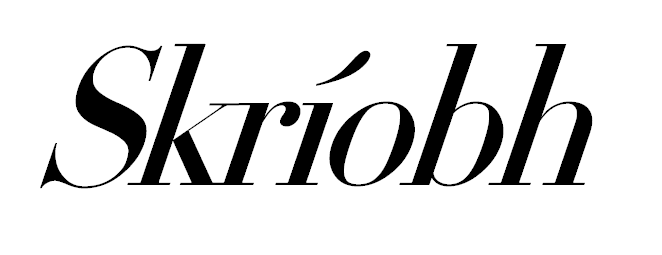In this second instalment of the weekly series 'Ancient Ireland', Skríobh paid a visit to the Harry Clarke windows in St. Patrick's Church in Newport.
Harry Clarke is Ireland's premier contributor to the world of stained-glass. He was born on North Frederick Street in 1889 to Joshua Clarke, who ran an ecclesiastical decorative workshop. Harry left school at 14 to help with the running of the family business and took art classes in the evening. As his craft developed, Harry spent time studying abroad, travelling to Paris and London several times. His talent flourished, with national recognition at the age of twenty one when he won the Board of Education's Gold Medal three years in a row. At this stage, Harry's work was being exhibited around Europe, in Dresden and at the Louvre. In 1915, Clarke won his first piece of commissioned stain glass, completing the eleven windows of Honan's Chapel in County Cork which won him widespread acclaim and further work.

His skill as an artist allowed him to work in other areas. He provided the illustrations to Hans Anderson's 'Fairy Tales' as well as Edgar Allen Poe's 'Tales of Mystery and Imagination.' Aubrey Beardsley, Gustave Moreau and Joris-Karl Huysman have been cited as amongst the strongest sources of inspiration for Clarke. Their work, which dealt with the grotesque, the morbid and the realistic, allowed for an era of artists to dwell and consider the human condition at the turn of the 20th century. The naturalist movement was coming to an end as the symbolist aesthetic gained in popularity. This meant that there would be a greater emphasis put on the artist's melancholic outlook on life, which may have been reflective of a period of social discontent and strife.
The windows of St. Patrick's Church of Newport were commissioned by Canon McDonald of the Burrishoole parish. The same priest was responsible for the construction of St. Patrick's Oratory at the summit of Croagh Patrick. Situated at the top of Barrack Hill, the Roman Catholic church forms an imposing landmark on the countryside. The stained-glass was ordered for the new church in 1917, and would be paid for by the priest's own life insurance policy of £800.


The windows are situated in the east wall of the church and are known as 'The Last Judgement Windows' and also as 'The Three Sisters'. Three, equal sized windows stretch from behind the high-alter to the ceiling of the church. They depict a scene from the apocalypse, as the souls of the mortals are cast into hell. Harry's eclectic style can clearly be seen in the intense visuals, breaking from the traditional, conservative style of Roman Catholic stain glass.
The almost cartoon-style imagery is most clearly seen in the window on the right, which contains the tormented faces and skulls of the condemned. A long running trend of Harry's was to insert a self-portrait into his work, and at this stage in his life he was suffering from the aftermath of an almost-fatal bicycle fall and chronic tuberculosis. In what could be seen as a reflection of his own state, his image can be seen in the green upside-down face, descending into hell.
Harry Clarke died at the age of 42 in Switzerland after a long illness. His work can be seen throughout Ireland and in Geneva at the International Labour Organisation building in Geneva. More information about the artists can be found on this thoroughly informative website. To visit Harry Clarke's stain glass windows, travel to Newport along the N59. The town is situated 10 kilometres north of Westport. St. Patrick's Church is found in the centre of Newport, 200 metres north of the Black Oak river, just off the main street at the top of the hill. St. Patrick's Church is open to the public with mass on Sundays at 10am.

No comments:
Post a Comment